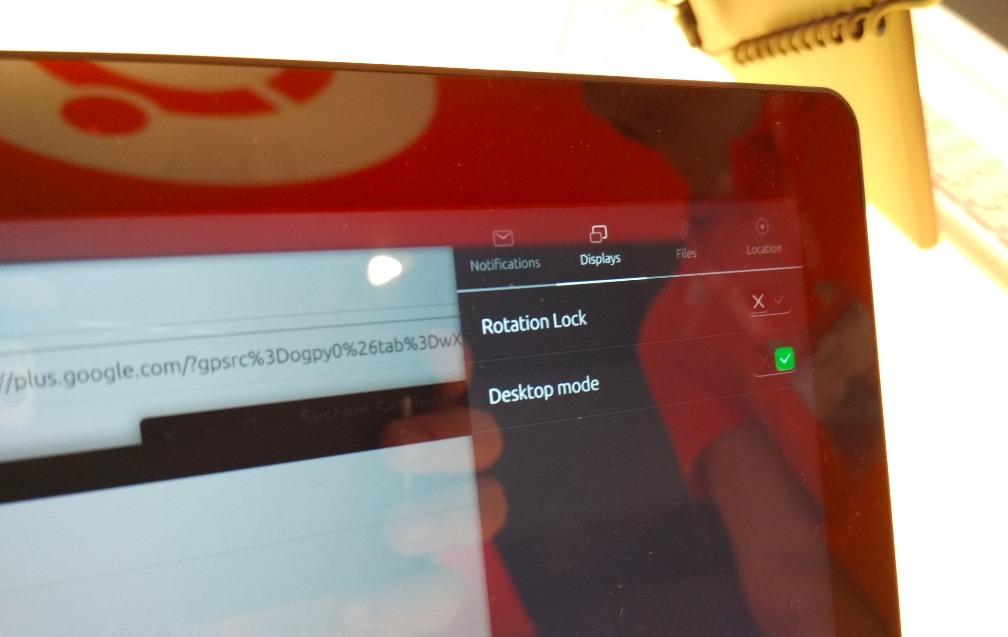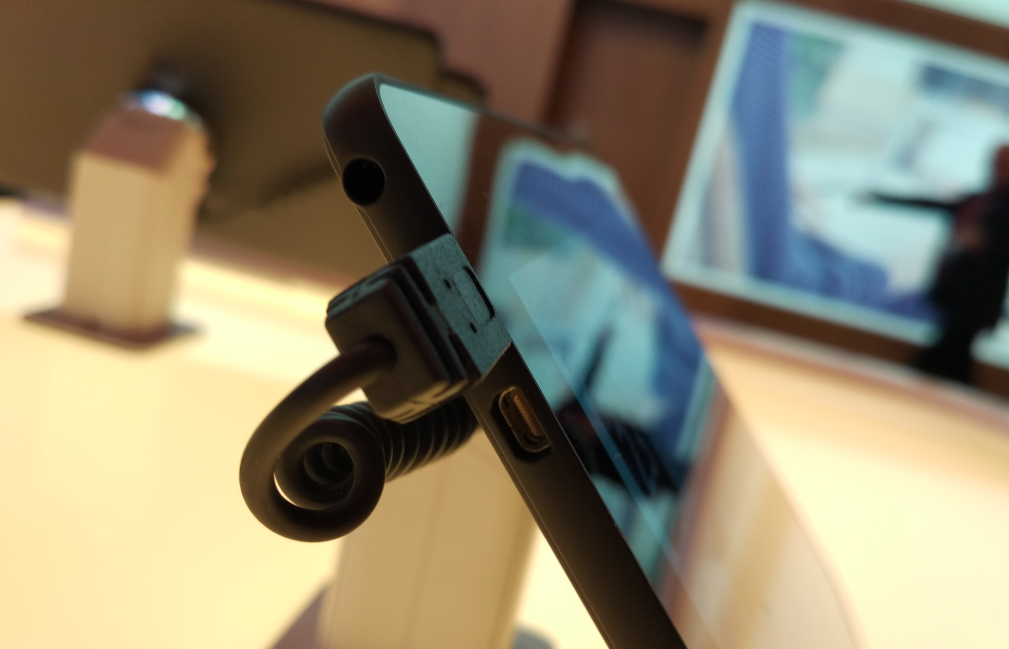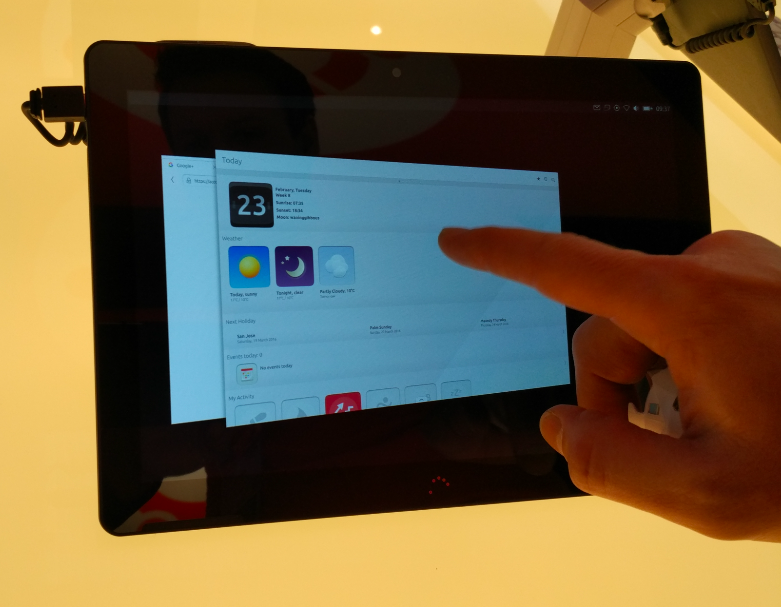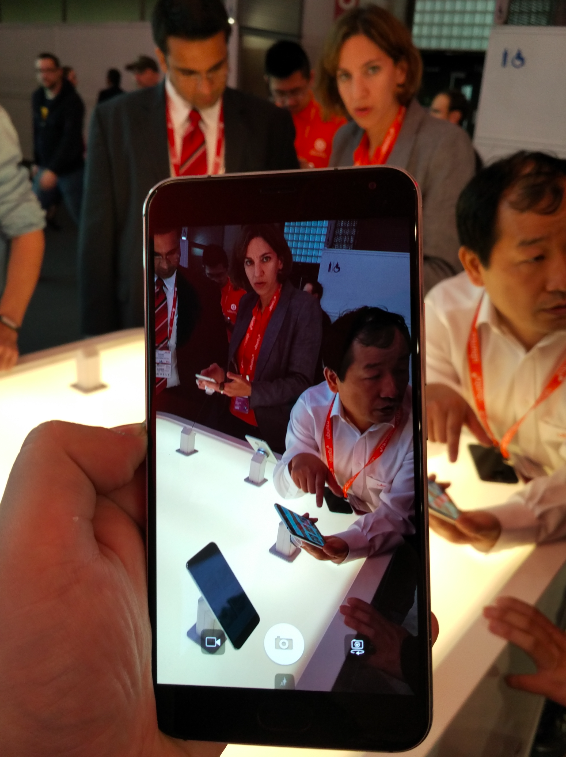In the wake # MWC16: Ubuntu Gadgets - BQ Aquaris M10 and Meizu Pro 5 Ubuntu Edition

Greetings to everyone on the iCover blog! I think it would not be an exaggeration to say that Canonical has long and hard tried to enter the mobile software market. The main income for Ubuntu developers is still not brought by the desktop version, but by server solutions for corporate users. We heard about the release of the Ubuntu version for tablets back in 2013, when the preliminary version was launched on Google Nexus 10. What successes have been achieved in Ubuntu for three years? Let's get a look.
So, meet BQ Aquaris M10 Ubuntu Edition - a tablet of the Spanish brand BQ with an unusual round logo (reminiscent of the process icon in Windows 8 and 10).
')

Characteristics of the tablet look like this:
- SoC MediaTek MT8163A
- CPU Cortex-A53 @ 1.5 GHz (4 cores)
- GPU Mali-T720 MP2 @ 600 MHz
- RAM - 2 GB
- Permanent memory - 16 GB
- Screen 10.1 ″ IPS, 1920 × 1200, 240 ppi, touch screen
- Support for microSD memory cards up to 200 GB (ext3)
- Connectors - Micro-USB with OTG, Micro-HDMI, 3.5 mm headset
- Connectivity - Wi-Fi 802.11b / g / n 2.4 GHz and 5 GHz, Bluetooth 4.0, GPS
- Cameras - 5 megapixel (front) and 8 megapixel (rear), shooting video Full HD 30 f / s
- Battery - Li-Polymer 7280 mAh, non-removable
- Dimensions - 246 × 171 × 8.2 mm
- Weight - 470 g
It runs under Ubuntu 15.04 and supports a separate desktop mode:

The most important feature of the desktop mode is full multi-windowing, and it can be turned on forcibly without connecting an external monitor. In the desktop mode, you can (and should!) Use applications for regular desktop Ubuntu - for example, pre-installed GIMP, Firefox or LibreOffice, while support for touch control is preserved.
An external monitor can be connected to the tablet via the Micro-HDMI connector:

Thus, you can use the tablet as a desktop computer by connecting bluetooth peripherals (keyboard, mouse and other accessories). In the desktop mode, all other applications from the “touch” interface of Ubuntu are launched in separate windows:

In fact, Canonical relies on the rapprochement of mobile and desktop OS, and the BQ tablet offers a good alternative to Windows Continuum - it can be used as a separate gadget or in conjunction with a monitor and classic desktop peripherals.
The problems and questions arising from this are already “stuck on the teeth” - how will X86 applications run on an ARM device and how productive will they be? In any case, important here is the potential appearance of universal applications that work equally well on smartphones, tablets and desktops. At least one tablet is “ready” for the emergence of such applications, the next step for the developer community.

The tablet should go on sale in the near future, at the stand clarified that the exhibition sample is still "not quite ready." The exact cost of it is unknown, but it is expected that it will be an inexpensive device.
As for personal impressions, a reservation needs to be made - the final version of the software was not presented on the stands, so I can call the general impression about smoothness and stability of work “restrained positive.” After the opening, the LibreOffice application “crashed”; switching between the desktop and the “classic” operating mode is not smooth enough. At the same time, other functions (for example, paging through full-screen open applications in the form of pages) work smoothly and flawlessly. In any case, the speed of response to any actions (including connecting a monitor or launching programs) can be called acceptable (comparing, for example, with netbooks on Intel Atom running Windows).
From Canonical smartphones brought to Barcelona Meizu Pro 5 Ubuntu Edition:

Out of curiosity, I switched the interface to Russian - this required a reboot of the device. Ubuntu flagship does not turn on and restart very quickly, but there are no complaints about work and responsiveness.

The smartphone with a metal case is built on the Samsung Exynos 7420 single-chip system and is equipped with a 5.7-inch display with a resolution of 1920 x 1080 pixels. It has two slots for SIM cards (one can be taken under a memory card). The RAM in it is 4GB, and a constant 64GB (there will be a version with 32GB) of flash memory that meets the UFS 2.0 specification. USB-C port available.

The main camera is 21 megapixel with dual flash. Photographs, subjectively, very well :)
Among other things, this is the first device with Ubuntu, which has a fingerprint scanner and a hardware button. True, the fingerprint scanner did not work - the representatives of Ubuntu at the booth assured that the final version of the software for working with the scanner still appears.

In general, the smartphone and tablet from Ubuntu left a pleasant impression. It remains to wait a bit - the pre-start of sales in Russia is scheduled simultaneously with European countries, at least on the stand was given such a promise. The most interesting, in my opinion, is the fate of the tablet - perhaps this universal gadget on Ubuntu will occupy its niche and make a worthy competition to tablets with two operating systems - Windows and Android .
Other iCover articles and events
- Watch tracker Gator Caref. Child care
- Spring discounts from KitchenAid
- Sales of various cool pieces
- Sport vs fitness: Fitbit Charge HR and Polar M400
- Why do you need a smart watch: 5 of their useful properties
- Headphones for home. Choose your
- Xiaomi Power Bank 16000 or Xiaomi Power Bank 5000? New Product Overview
Source: https://habr.com/ru/post/391445/
All Articles